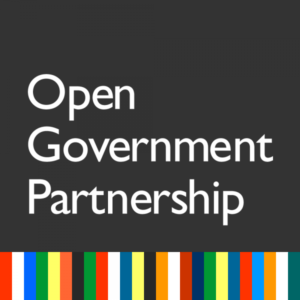Disclosure of Information from Government Systems in an Open Data Format (BR0051)
Overview
At-a-Glance
Action Plan: Brazil Second Action Plan
Action Plan Cycle: 2013
Status:
Institutions
Lead Institution: Ministry of Planning, Budget and Management
Support Institution(s): NA
Policy Areas
Access to Information, Open DataIRM Review
IRM Report: Brazil End-of-Term Report 2013-2016, Brazil Progress Report 2013-2014
Early Results:
Major

Design i
Verifiable: Yes
Relevant to OGP Values: Yes
Ambition (see definition): High
Implementation i
Description
to encourage the increased disclosure of information in an open format by public bodies and agencies through the implementation of Institutional Open Data Plans, which shall be monitored and prioritized by the Steering Committee of the National Open Data Infrastructure (INDA), as described in INDA’s Action Plan.
IRM End of Term Status Summary
Commitment 2.14. Disclosure of information from government systems in an open data format
Commitment Text: To encourage the increased disclosure of information in an open format by public bodies and agencies through the implementation of Institutional Open Data Plans, which shall be monitored and prioritized by the Steering Committee of the National Open Data Infrastructure (INDA), as described in INDA’s Action Plan.
Responsible institution: Ministry of Planning, Budget and Management
Supporting institution: None
Start date: Not specified End date: 14 December 2014
Commitment aim
This commitment planned to encourage the adoption of Open Data Plans (PDA) as a way to improve the implementation of open data practices within government agencies. PDAs are orienting documents for opening data with minimum quality standards, and for increasing the efficiency, standardisation and public accountability of open data policies and public agency programs.
Status
Midterm: Completed
The Ministry of Planning’s PDA underwent a collaborative and transparent process at the end of 2013 before being officially published. The government also put out a manual for creating PDAs, and held seminars with other ministries to promote the initiative. During the action plan period, both the Ministry of Planning and Ministry of Justice published PDAs, the latter going through a period of public comments. Given that the commitment text did not specify how many PDAs were to be published (indicating only that more than one would have to be produced), the commitment was considered complete.
Did it open government?
Access to information: Major
Civic participation: Major
The commitment addressed two very important topics: (1) the strategic promotion of the open data culture within government, and (2) the establishment of practices that promote the effectiveness and accountability of the open data process at the ministerial level. In terms of access to information, the PDA model provides a framework for the improved quality, quantity, management, and sustainability of ministerial open data initiatives. A few examples of ministerial commitments are the disclosure of infrastructure spending and access to justice data, as well as the hosting of open data contests and conferences.
The major value of this new framework is evidenced by its breadth of scope. Though PDAs were implemented in only two key ministries (Ministry of Justice and Ministry of Planning, Budget and Management) by the time of the midterm assessment, additional agencies have published PDAs since the close of the action plan, including the Ministry of Finance,[Note 61: Ministry of Finance, “Fazenda disponibiliza Plano de Dados Abertos (PDA),” 27 July 2016, http://bit.ly/2ipNE5m. ] the Brazilian Institute of Geography and Statistics,[Note 62: “IBGE disponibiliza Plano de Dados Abertos,” 6 September 2016, http://bit.ly/2iNshvL. ] and the Ministry of Science, Technology, Innovation, and Communication.[Note 63: Lúcia Berbert, “Por mais transparência, MCTIC institui Plano de Dados Abertos,” 13 July 2016, http://bit.ly/2ifW7YL. ] By December 2016, more than 20 agencies had published PDAs,[Note 64: List of Open Data Plans, http://wiki.gtinda.ibge.gov.br/Plano-de-Dados-Abertos.ashx. ] including those already involved in the second action plan (e.g., the National Fund for Education Development[Note 65: FNDE, PDA, https://goo.gl/PSRqtM. ], Brazilian Health Surveillance Agency, [Note 66: ANVISA, PDA, https://goo.gl/bOzzb0. ] and the Ministry of Education[Note 67: MEC, PDA, https://goo.gl/2oKa13. ]), and new agencies such as the Ministry of Tourism.[Note 68: Ministry of Tourism, PDA, https://goo.gl/iyOvWO. ]
As for civic participation, the PDA model institutionalised civil society participation in the governance of the Open Data Plans. Civil society now has a guaranteed place on the council to monitor the plans, and is also included, by default, in the consultation phase of the plans.
Carried forward?
The commitment was not carried forward to Brazil’s third action plan. If the government wishes to pursue it further in the future, the IRM researcher suggests expanding the culture of the PDA to other ministries, and developing a PDA model that interacts with the three branches of government and the Public Prosecutor’s Office. Creating monitoring metrics to determine if the plans are being implemented, and documenting best practices to share experiences would also be useful activities.
